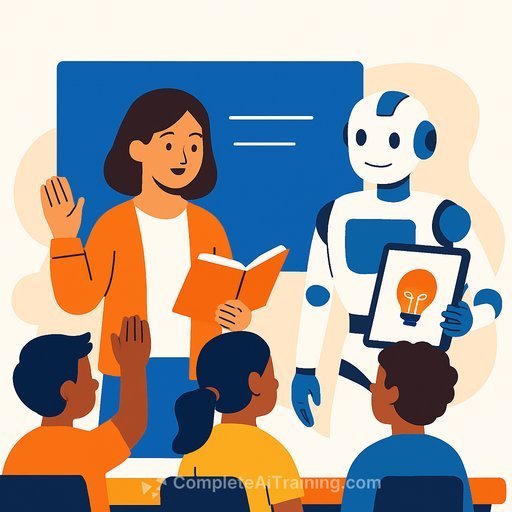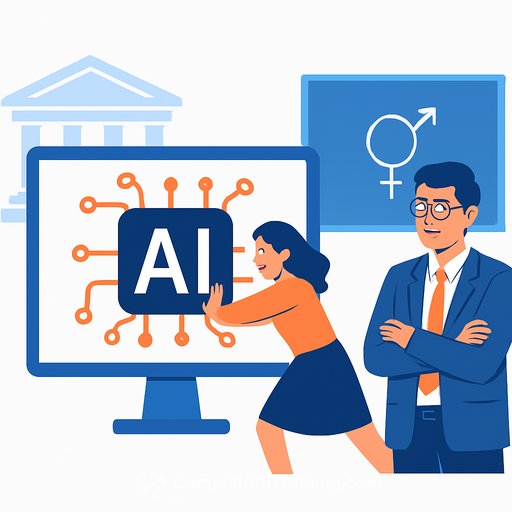AI from Class III: What Schools Need to Prepare for by 2026-27
The Centre will introduce Artificial Intelligence across the school curriculum from Class III onward starting 2026-27. Officials describe it as a national strategy to make students and teachers work-ready for an AI-driven economy.
CBSE is building the grade-wise framework and faces a clear challenge: orienting more than one crore teachers to deliver AI-linked learning. A pilot is already helping teachers use AI tools to plan lessons, with early traction and practical gains in prep time and differentiation.
What's changing
- Progressive AI exposure from Class III through XII, with age-appropriate concepts and classroom use-cases.
- Teacher development at scale to ensure consistent classroom practice across regions and school types.
- AI treated as basic literacy, not a niche elective. As one senior official put it: "When today's third grader graduates in 2035, AI will not be an advantage-it will be a necessity."
- The move reflects NEP 2020's push to integrate AI, IoT, and other emerging technologies into schooling.
Where schools stand today
Momentum is already visible. 18,839 CBSE schools offer AI as a skill subject from Class VI through a 15-hour module, and Classes IX-XII have it as an optional subject.
Teacher training since 2019 has crossed 10,000 with support from Intel, IBM, and NIELIT. Student uptake has surged to 7.9 lakh in Classes IX-X and over 50,000 in XI-XII this year, up from about 15,000 and 2,000 respectively in 2019.
Why this matters for workforce readiness
At the release of a NITI Aayog report on AI and jobs, CEO B V R Subrahmanyam warned that India's IT workforce of 7.5 million could shrink to six million by 2030 without focused reorientation and upskilling. "AI is changing work, workers, and the workplace."
The report estimates about two million traditional roles could be displaced, while eight million new roles may emerge with the right ecosystem. It proposes an AI Talent Mission and projects 10 million IT jobs and 3.1 million customer service roles by 2030 if the shift is managed well.
Action plan for school leaders (next 6-12 months)
- Name an AI implementation lead: One owner for strategy, training, and measurement.
- Audit readiness: Devices, connectivity, classroom display, LMS access, and data policies.
- Schedule teacher orientation: Begin with foundational AI concepts, prompt practices, classroom use, and student safety.
- Start a pilot: Use AI tools for lesson planning in 2-3 subjects per grade; track time saved and student outcomes.
- Write a school AI policy: Responsible use, bias checks, citation rules, assessment integrity, and safeguarding.
- Parent communication: Explain goals, benefits, risks, and how the school will protect student data.
Teacher upskilling priorities
- AI basics: what it is, strengths/limits, bias, and ethics explained in simple language.
- Prompt practices for planning, differentiation, and feedback.
- Data literacy: reading charts, simple datasets, and fact-checking outputs.
- Tool fluency: safe use of classroom AI apps, offline options for low bandwidth, and accessibility features.
- Assessment design: tasks that encourage original thinking and process transparency.
- Student safety: privacy, consent, age-appropriate use, and digital footprint awareness.
Curriculum design cues (Class III-XII)
- Early classes: pattern recognition, step-by-step thinking, simple block-based logic, and AI-in-daily-life examples.
- Middle school: data stories, basic algorithms, ethics, and subject projects (science simulations, language support, art tools).
- Secondary: applied projects, prompt writing, low-code tools, domain-specific applications (health, agriculture, logistics, media).
- Assessment: mix of performance tasks, reflection journals on AI use, and group projects with clear roles.
- Local context: examples in local languages and community problem-solving to keep learning relevant.
Infrastructure and policy checklist
- Devices and shared carts with minimum specs for AI-friendly tools; plan for maintenance and refresh cycles.
- Reliable internet in classrooms; offline/low-data options for schools with constraints.
- LMS or content hub to manage AI-enabled resources, assignments, and feedback.
- Data protection: consent workflows, storage rules, and vendor compliance with Indian regulations.
- AI-use guidelines for students and staff; academic integrity policy updated for generative tools.
What officials are saying
"We need to move fast so that students and teachers are properly aligned with this technology over the next two to three years," said the school education secretary, noting the scale of teacher orientation ahead.
"Our objective is to prepare both the learner and the teacher for the digital economy," he added, pointing to ongoing pilots where teachers use AI to build lesson plans.
Useful references
Help your staff get ready
If you need structured upskilling by role (teachers, coordinators, IT staff), explore curated options here:
Your membership also unlocks:






